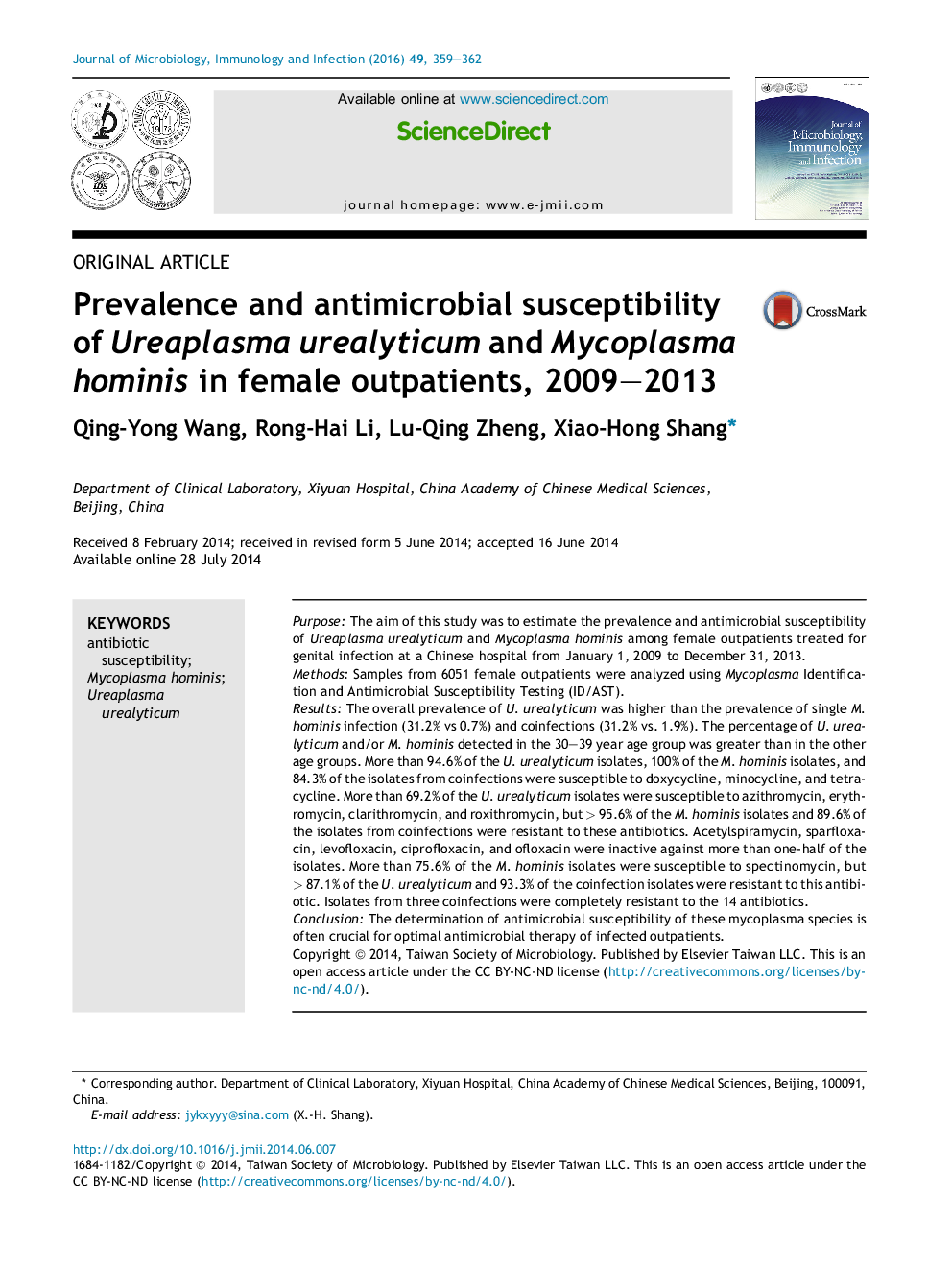| Article ID | Journal | Published Year | Pages | File Type |
|---|---|---|---|---|
| 3377699 | Journal of Microbiology, Immunology and Infection | 2016 | 4 Pages |
PurposeThe aim of this study was to estimate the prevalence and antimicrobial susceptibility of Ureaplasma urealyticum and Mycoplasma hominis among female outpatients treated for genital infection at a Chinese hospital from January 1, 2009 to December 31, 2013.MethodsSamples from 6051 female outpatients were analyzed using Mycoplasma Identification and Antimicrobial Susceptibility Testing (ID/AST).ResultsThe overall prevalence of U. urealyticum was higher than the prevalence of single M. hominis infection (31.2% vs 0.7%) and coinfections (31.2% vs. 1.9%). The percentage of U. urealyticum and/or M. hominis detected in the 30–39 year age group was greater than in the other age groups. More than 94.6% of the U. urealyticum isolates, 100% of the M. hominis isolates, and 84.3% of the isolates from coinfections were susceptible to doxycycline, minocycline, and tetracycline. More than 69.2% of the U. urealyticum isolates were susceptible to azithromycin, erythromycin, clarithromycin, and roxithromycin, but > 95.6% of the M. hominis isolates and 89.6% of the isolates from coinfections were resistant to these antibiotics. Acetylspiramycin, sparfloxacin, levofloxacin, ciprofloxacin, and ofloxacin were inactive against more than one-half of the isolates. More than 75.6% of the M. hominis isolates were susceptible to spectinomycin, but > 87.1% of the U. urealyticum and 93.3% of the coinfection isolates were resistant to this antibiotic. Isolates from three coinfections were completely resistant to the 14 antibiotics.ConclusionThe determination of antimicrobial susceptibility of these mycoplasma species is often crucial for optimal antimicrobial therapy of infected outpatients.
